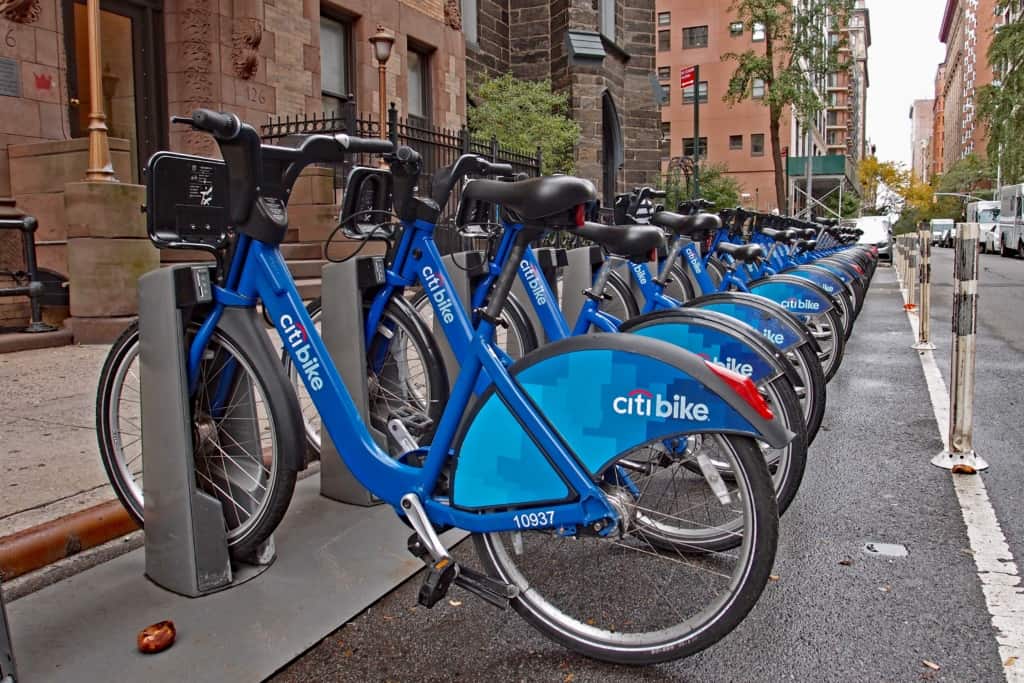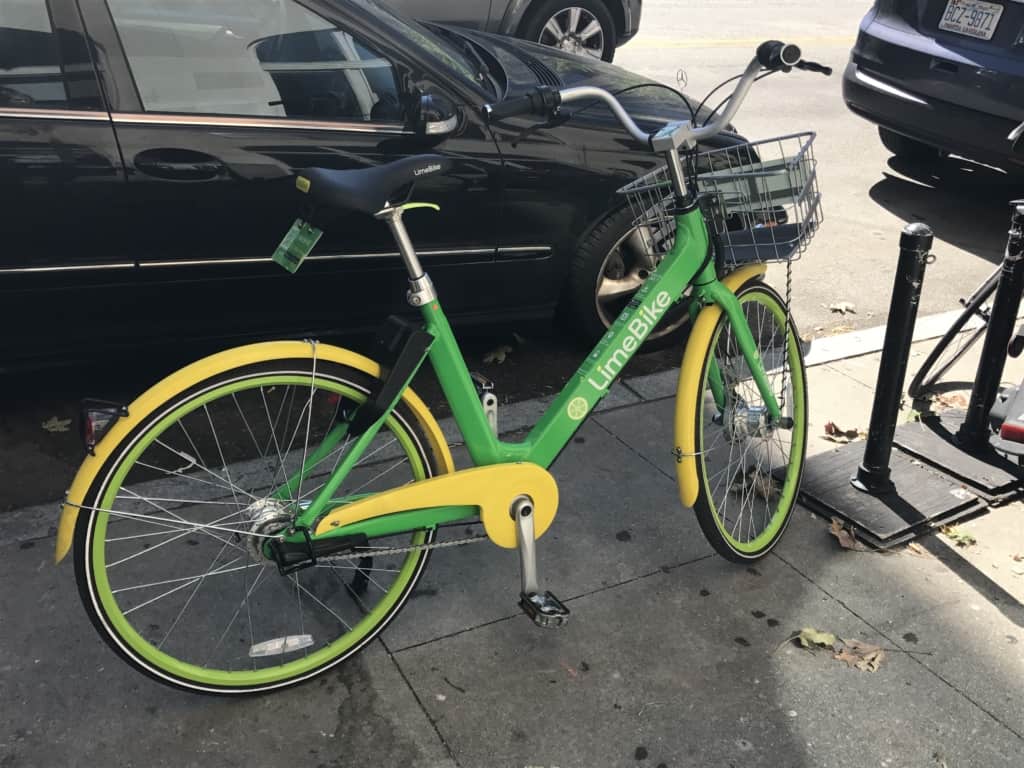
This week, the EducationNC team is bike riding across North Carolina, led by our fearless content editor Laura Lee. “Training” for my leg of the trip on Raleigh’s beautiful Greenway reaffirmed how much I enjoy biking. However, I rarely get the chance to do so because I do not own a bike.
But a lack of bike ownership may no longer be a barrier to being a cyclist. Bike sharing has arrived in Raleigh, and Durham is asking for public input on what kind of bike sharing program it should pursue.
NC State University pilots dockless bike sharing program
NC State University is piloting a bike-share program with LimeBike, a California-based company that operates in 16 cities and universities across the country.
Started in August, LimeBike has 300 bikes in operation in and around NC State’s campus. While they are primarily used by students and faculty, anyone is free to use the bikes, and riders can take them as far as they want. The first ride is free, and after that it costs $1 for a 30 minute ride with lower prices for NC State students and employees. The program costs nothing for NC State to use.
LimeBike is a dockless bike sharing program. Users pick up bikes wherever they are available and drop them off wherever is convenient – not at specific stations. Dockless programs use smart phone apps that allow the user to locate available bikes on a map and use the app to unlock the bike.

Raleigh’s city bike-share program to start next spring
Raleigh will soon have a second bike sharing program. In June, Raleigh City Council agreed to start contract negotiations with two companies for a bike sharing program that will launch next spring.
The plan is to introduce 300 bikes at 30 different stations throughout the city. A third of these bikes will be “e-bikes,” or bikes that use electricity to make it easier to peddle.
The city released a preliminary map of the stations on September 18. They are located mainly around downtown and areas with access to bike trails. Unlike the dockless program, riders can only pick up and return bikes to these set stations.
The bike share program will cost the city $1.65 million initially with yearly operating costs of $653,000 that the city hopes to offset with fares and sponsorships.
Bike share programs across the world
Raleigh is late to the game of bike share programs. Paris and Barcelona started their first bike sharing programs in 2007 with Washington, D.C. starting the first U.S. bike sharing program in 2008.
By 2010, bike sharing programs were sprouting up across the globe from Australia to London to Mexico City. Today, there are almost 900 bike share systems operating 1 million bikes across the world.
View an interactive timeline of bike share programs across the world at CityLab and check out the bike sharing map below used with permission by Russell Meddin and Paul DeMaio.
Docking versus free floating: which is best?
The two different bike sharing models in Raleigh will offer an opportunity to see which users prefer – the free floating, park anywhere LimeBike model or the bike station model that will be used by Raleigh’s bike sharing program. Each model has its pros and cons.
Bike systems with set stations – the docking model – are the most common bike share model in major cities, especially those that have had bike sharing for several years. The main advantage of this model is that riders know where they can consistently find bikes and the operators do not have to go hunting around the city for bikes.
However, docking systems are expensive to install, and once they are in, they cannot easily be moved to reflect changing populations or preferences. Cities with docking systems have also encountered issues trying to balance the number of bikes at stations across the city. More popular stations can run out of bikes and when stations fill up, riders have to find other stations to return their bikes.
Free floating bike share models like LimeBike allow riders to find a bike via their smartphone and park their bike wherever, making it more convenient for users. However, because riders can park their bikes anywhere, free floating bike shares need operators who can go retrieve far flung bikes that are not likely to be picked up by any other riders.
Cities with free floating systems are also dealing with riders leaving bikes in the middle of parking lots, sidewalks, and other places that create congestion. Amsterdam and Dublin have decided to remove free floating shared bikes in public spaces because they are causing so much congestion.
The latest in bike sharing: geofencing
To get around the problem of riders leaving bikes wherever they want and creating congestion, some bike systems are embracing geofencing, which is a hybrid between docking and free floating models.
Geofencing is a technology that allows the bike share operators to create geographic drop off locations and then monitor bikes in real time to ensure they are parked in those locations. Riders then use their apps to find bikes and unlock them, similar to the free floating model.
The idea is similar to docking stations in that users must return bikes to specified locations. However, because the operators do not have to build physical stations, it is much less expensive and the stations can be changed at a moment’s notice to reflect changing preferences or patterns.
In Singapore, a company called SG Bike launched at the end of August using geofencing. If users do not return their bikes to the “geostations” that SG Bike created, the bicycle will sound an alarm, notifying the user that the bike is not parked in the correct location. If the user fails to move the bike, he or she will be fined in the range of $2 to $5. They are hoping the geostation in combination with a small fine will encourage users to park their bikes responsibly.
As North Carolina moves forward with bike sharing plans, we would be wise to look to other cities to see how they are addressing lessons learned and innovating as technological advances bring new opportunities.
Weekly Insight


